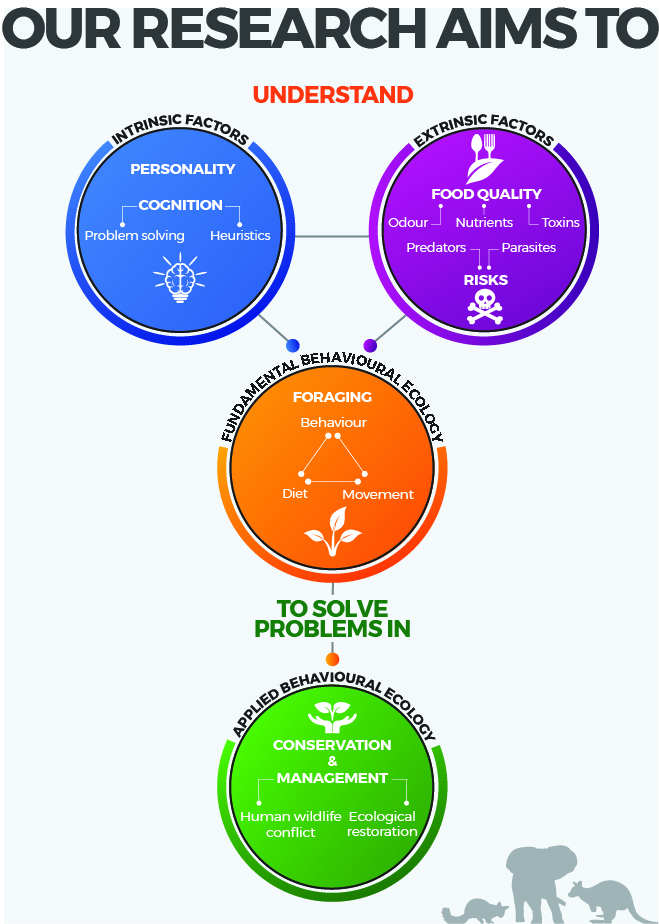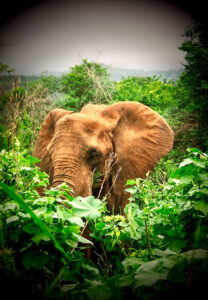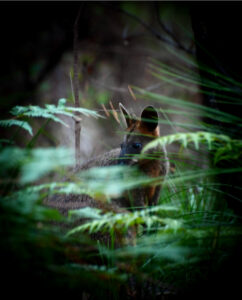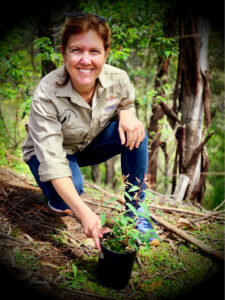Our research is about foraging and behavioural ecology across four integrated domains:
UNITE SENSORY AND FORAGING ECOLOGY
We explore the central role of plant odour in mediating foraging in mammals, and mammalian herbivores in particular. The implications for management and conservation are exciting: we can exploit how herbivores use odour to find and choose foods, manipulating odours to help protect plants we value.
UNDERSTAND HOW ANIMAL PERSONALITY AFFECTS FORAGING
We incorporate the influence of individual behavioural phenotype – animal personality – into the foraging ecology of mammalian herbivores. We explore how personality shapes the diet, habitat use and movement ecology and problem-solving capacity of individuals, altering their response to predation risk and their propensity to pick up and transmit parasites.
INTEGRATE PLANT-HERBIVORE AND PREDATOR-PREY ECOLOGY
In quantifying how plant toxins affect more than food intake by herbivores, by affecting how they mix and switch between food types, we can develop more realistic models of how herbivores forage in space and time in a realistic ecological context. By then uniting the dual influence, and often the dilemma, associated with the chemistry of food and the risk of predation, we provide unique insights into foraging ecology, such as how individual foragers balance the costs and benefits of finding good food in risky places.
CONSERVATION & MANAGEMENT
We apply our fundamental research to help develop new, practical solutions for conservation and management, for example to protect plants we value from problem native and introduced herbivores using on-lethal methods, to design landscapes better suited to the variation in needs among individuals within species, to improve pest control, and to reduce disease transmission.

Representative publications

LINKING SENSORY AND FORAGING ECOLOGY
- Orlando CG, Tews A, Banks PB, McArthur C (2020) The power of odour cues in shaping fine-scale search patterns of foraging mammalian herbivores. Biology Letters 16: 20200329.
McArthur C, Finnerty PB, Schmitt MH, Shuttleworth A, Shrader AM (2019) Plant volatiles are a salient cue for foraging mammals: elephants target preferred plants despite background plant odour. Animal Behaviour 155: 199-216.
Finnerty PB, Stutz RS, Price CJ, Banks PB, McArthur C (2017) Leaf odour cues enable non-random foraging by mammalian herbivores. Journal of Animal Ecology 86: 1317-1328.
Stutz RS, Croak B, Banks PB, Proschogo N, McArthur C (2017) Olfactory and visual plant cues as drivers of selective herbivory. Oikos 126: 259-268.
Stutz RS, Banks PB, Proschogo N, McArthur C (2016) Follow your nose:leaf odour as an important foraging cue for mammalian herbivores. Oecologia 182:643-651.
Bedoya-Perez M, Issa D, Isler I, Banks PB, McArthur C (2014) Roles of the volatile terpene, 1,8-cineole, in plant-herbivore interactions: a foraging odor cue as well as a toxin? Oecologia 174:827-837.

SIGNIFICANCE OF ANIMAL PERSONALITY IN FORAGING ECOLOGY
Herath A, Wat KKY, Banks PB, McArthur C (2021) Animal personality drives individual dietary specialisation across multiple dimensions in a mammalian herbivore. Functional Ecology 35:2235-2265.
Wat KKY, Banks PB, McArthur C (2020) Linking animal personality to problem-solving performance in urban common brushtail possums. Animal Behaviour 162:35-45.
Wat KKY, Herath APHM, Rus AI, Banks PB, McArthur C (2020) Space use by animals on the urban fringe: interactive effects of sex and personality. Behavioral Ecology 31:330-339.
Mella VSA, Ward AJW, Banks PB, McArthur C (2015) Personality affects the foraging response of a mammalian herbivore to the dual costs of food and fear. Oecologia 177:293-303.

PLANT-HERBIVORE AND PREDATOR-PREY ECOLOGY
Mella VSA, Possell M, Troxell-Smith SM, McArthur C (2018) Visit, consume and quit: patch quality affects the three stages of foraging. Journal of Animal Ecology 87:1615-1626.
Bedoya-Perez M, Issa DD, Banks PB, McArthur C (2014) Quantifying the response of free-ranging mammalian herbivores to the interplay between plant defence and nutrient concentrations. Oecologia 175:1167-1177.
McArthur C, Banks PB, Boonstra R, Forbey JS (2014) The dilemma of foraging herbivores: dealing with food and fear. Oecologia 176:677-689.
McArthur C, Orlando P, Banks PB, Brown JS (2012) The foraging tightrope between predation risk and plant toxins: a matter of concentration. Functional Ecology 26:74-83.
Nersesian CL, Banks PB, McArthur C (2011) Titrating the cost of plant toxins against predators: determining the tipping point for foraging herbivores. Journal Animal Ecology 80:753-760.

CONSERVATION & MANAGEMENT
Johnstone KC, McArthur C, Banks PB (2021) Testing transgenerational transfer of personality in managed wildlife populations: a house mouse control experiment. Ecological Applications 31:e02247.
Rus AI, McArthur C, Mella VSA, Crowther MS (2021) Habitat fragmentation affects movement and space use of a specialist folivore, the koala. Animal Conservation 24:26-37. doi.org/10.1111/acv.12596.
Garvey PM, Banks PB, Suraci JP, Bodey TW, Glen AS, Jones CJ, McArthur C, Norbury GL, Price CJ, Russell JC, Sih A (2020) Leveraging motivations, personality, and sensory cues for effective vertebrate pest management Trends in Ecology & Evolution 35: 990-1000.
Stutz RS, Banks PB, Dexter N, McArthur C (2015) Associational refuge in practice: can existing vegetation facilitate woodland restoration? Oikos 124:571-580.
Tuft KD, Crowther MS & McArthur C (2012) Fire and grazing influence food resources of an endangered rock-wallaby. Wildlife Research 39:436-445.
Tuft KD, Crowther MS, Connell K, Mueller S, McArthur C (2011) Predation risk and competitive interactions affect foraging of an endangered refuge-dependent herbivore. Animal Conservation 14:447-457.
Wallaby photos courtesy of Miguel Bedoya-Perez
